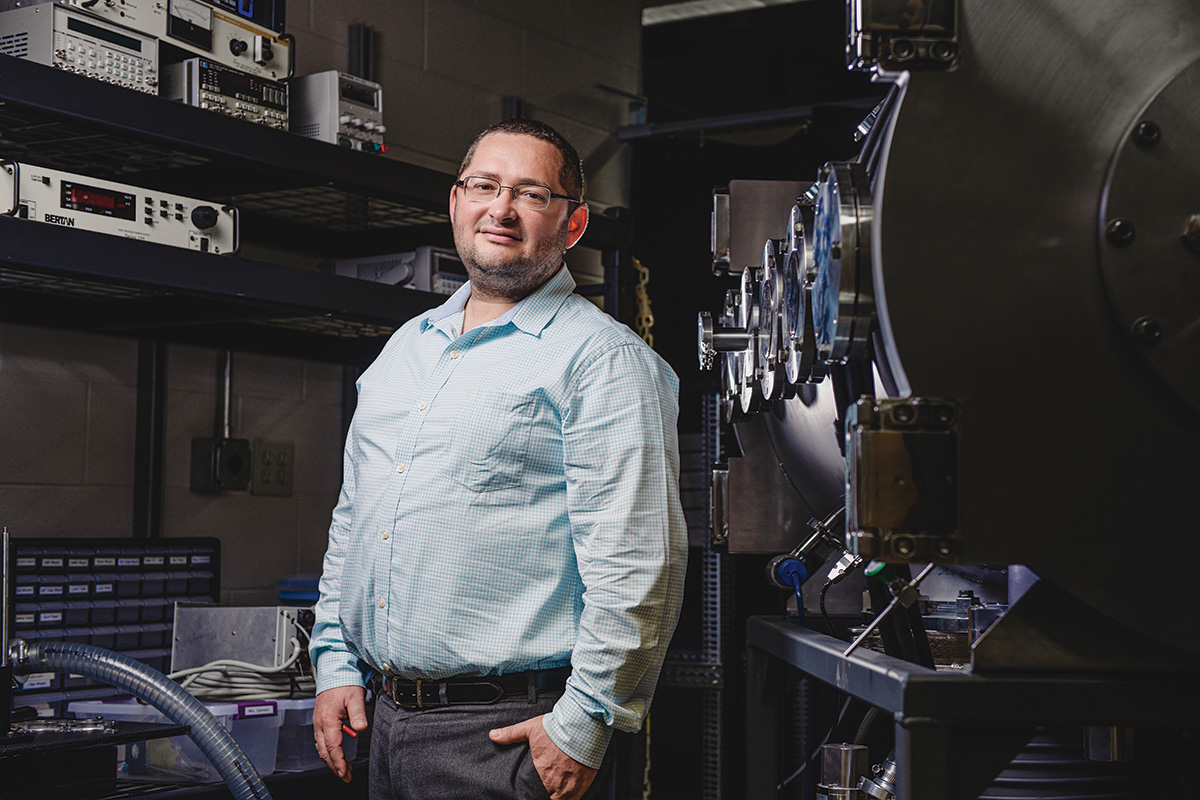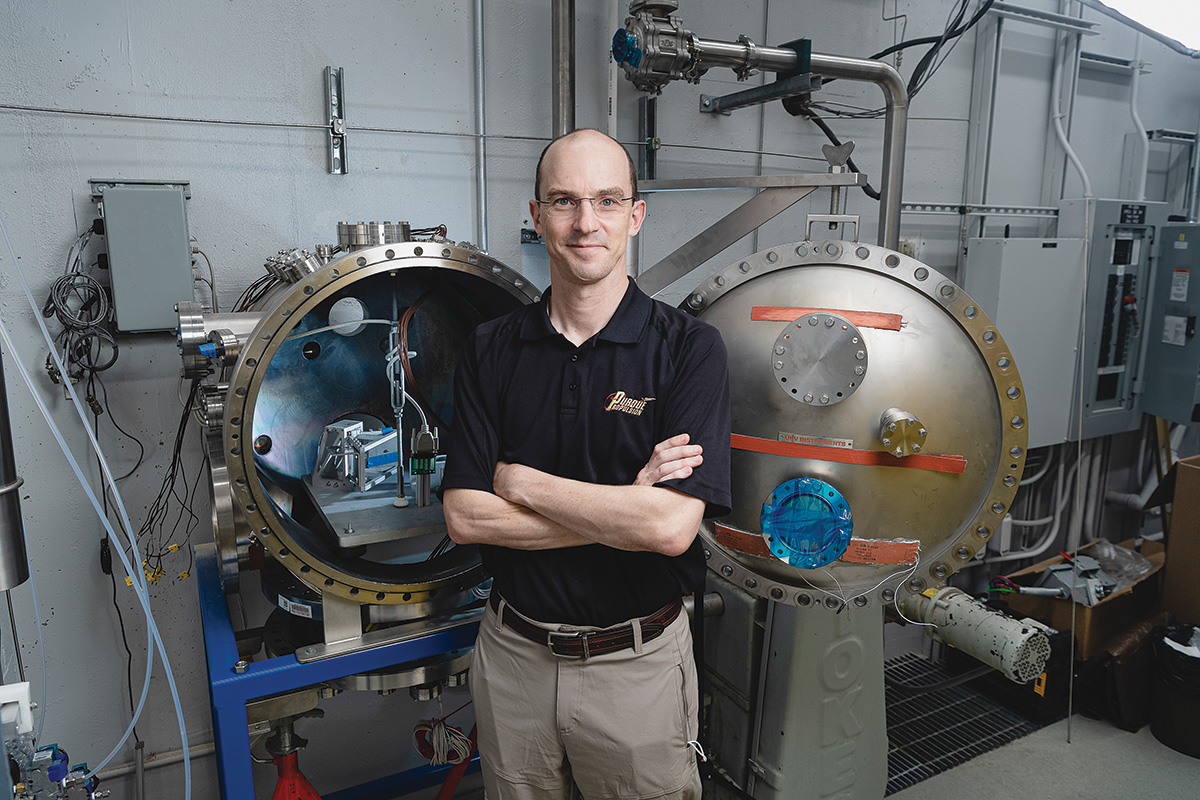
Chemical propulsion and electric propulsion systems offer clear, differing advantages and cater toward specific missions. But there's always a trade-off between consumption of propellant and the time to perform a maneuver. A chemical propulsion system can complete a maneuver very quickly, but it burns propellant. An electric system can do the same maneuver with a fraction of propellant but needs much more time to execute.
If a spacecraft had both chemical and electric systems — in a "dual-mode" system that combines both thrusters into one unit — an operator or computer could decide which system to use depending on the situation. If time allowed for a gradual maneuver, the choice would be the propellant-saving electronic propulsion system. If a quick maneuver was needed, the chemical propulsion system could help instantly with some extra cost, in terms of burnt propellant.

Alexey Shashurin; Photo by - Rebecca McElhoe, Purdue University.
There isn't a current vehicle in orbit that uses such a chemical/electrical dual-mode system.
A pair of AAE professors is looking to change that. Alexey Shashurin and Timothee Pourpoint are working to integrate chemical and electric propulsion systems into a dual-mode system to achieve the benefit of two operational scenarios: highthrust/low-specific impulse and low-thrust/high-specific impulse.
"The bundle definitely makes sense," Shashurin said. A chemical propellant in an electrical thruster would use a small amount of that chemical propellant.
"Finding the right architecture that combines as many of the benefits of chemical and electric systems in one unit is highly challenging, but that's what makes this research so engaging," Pourpoint said.
Part of this work will include development of robust green propulsion systems, allowing for long-lasting operation in lunar orbits. A current focus is on the design of the chemical monopropellant thrusters operating with "green" chemical propellants at thrust level. The high density of the propellants and their unique chemical composition extends to additional propulsion capabilities, such as electrospray thrusters and pulse plasma thrusters. Recent advances in pressurization control techniques allow the combination of these technologies into a single feed system.

Timothee Pourpoint; Photo by - John Underwood, Purdue University
Such an approach could shift the paradigm in how CubeSats are propelled, allowing the best of both worlds from chemical and electric systems.
Purdue University is the ideal place to make such giant leaps with Pourpoint's lab at Maurice J. Zucrow Laboratories and Shashurin's Electric Propulsion and Plasma Laboratory in the Neil Armstrong Hall of Engineering.
"It's clear that we have a unique opportunity here to use a range of propellants that we can use at Zucrow toward that sort of application, and very few universities can do that," Pourpoint said. "We literally go down the road, between each other's labs, and iterate rapidly between configurations."
AAE graduate student Lee Organski will support the work as part of an Indiana Space Grant Consortium Fellowship. Organski will be co-advised by Pourpoint and Shashurin.